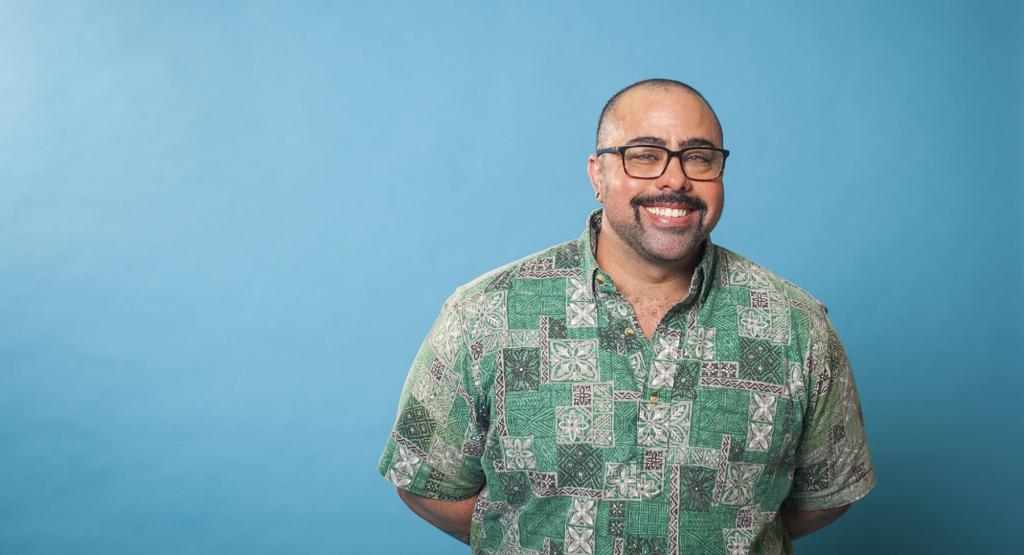This blog will describe some of the changes testosterone medications can create in your hair growth during your gender transition. If you are taking testosterone medications as a transgender man, transmasculine person, or nonbinary person, you might experience dramatic or not-so-noticeable changes in your hair growth pattern, hair texture, and even the thinness or natural color of your hair. This blog is a guide to those changes, for people who use hormone therapy as part of their transition.
Starting gender-affirming hormone therapy (GAHT, also sometimes called HRT) is an exciting experience for many transgender men, transmasculine people, and nonbinary people. If you are new to T, you might be checking the mirror every day to see how your face, body, and hair are changing. From chest hair to your beard, mustache, sideburns, and other body hair, it’s fun to look for the changes in your hair pattern growth! As testosterone begins to act on your body, you will look more “masculine.” That includes your different kinds of body hair.
Hair is one visual cue that people use to identify gender. For some people, the hair changes they experience on T might be dramatic. Others see subtle transformations or need more than a year on GAHT before they experience the full effect. Your dose of testosterone may affect how soon you see these changes. As early as your first three months on testosterone, you may notice changes in your body hair, facial hair, and even scalp hair. While the full effect of hair growth changes may take several years to develop, they are a natural part of transitioning with testosterone.
While few scientific studies focus on transgender people, there is some research out there that reflects our lived experience. (All the information you read on our blog is evidence-based and clinically vetted.) If you have additional questions, you can always reach out to your trans-led care team of medical experts at Plume.
Transgender men, transmasculine people, and hair loss
Testosterone is a “masculinizing” hormone. It will create physical changes in people who use it, including hair. (To learn more about those physical changes, check out Plume’s Guide to Testosterone and Your Trans Body!) One of the most common questions people ask about testosterone is about hair loss. They want to know: when I start testosterone, am I definitely going to lose my hair?
The answer is: maybe. It depends on a few different factors. Most folks taking testosterone notice some hair thinning on their scalp, particularly around the front and around the temples. You may notice some hair loss on your scalp, especially at your hairline. (Hair loss tends to occur after one year on T.) Many people notice thinning hair at their temples or in a “V” pattern. They may develop thinning hair, a receding hairline, loss of hair around the crown of the head, or complete scalp hair loss. However, this varies from person to person and is not a definite occurrence. The dose of testosterone and length of time using testosterone will also contribute to when hair loss starts to occur, but in most cases these changes do not start until after at least a year on testosterone.
The hair loss you experience on testosterone can also depend on your age and family history. Some people wonder if their hair loss, body hair growth, and beard be comparable to the hair patterns of the cisgender men in their family. Will they have a thicker or more sparse beard? Will they experience balding if the cisgender men in their family are bald?
There is a genetic component to the changes people experience, but every person’s body responds differently to testosterone. People taking testosterone therapy do seem to notice similar patterns of hair loss, body hair and facial hair growth as the cisgender men in their genetic family. (So, if your biological grandfather is bald, that might be in the cards for you, too!)
Changes in facial, scalp, and body hair patterns
While testosterone usually does not cause dramatic body hair or facial hair growth to appear overnight, your hair patterns may gradually begin to look more “masculine.” If you had thick, dark, or coarse hair on your face and body before starting testosterone, it may become thicker. Many people find that this hair changes after some time on T. Depending on your individual body, your facial hair may become more coarse and develop on your cheeks or jaw. You might be able to grow sideburns or a goatee before you have a full beard. At the same time, you may grow new hair on your chest, back, or shoulders.
As your hair texture, thickness, even natural color transform, your hair care needs may change, too. Hair growth is stimulated by androgens like testosterone and dihydrotestosterone (DHT). They are the key hormones in hair growth. Testosterone tends to change thin, light hairs into larger, darker hairs. People with high testosterone levels, particularly DHT, tend to experience more scalp hair loss. As your testosterone levels increase and your body adapts to higher levels of testosterone, your body and facial hair will become thicker and grow more quickly.
You might feel like you have less hair on your head because testosterone can also cause scalp hair loss. You will likely shed more hair, even if you don’t notice any balding or hair recession. You might also notice that your hair texture changes. It may feel dry or stiff, while the skin on your scalp feels oily. You might want to experiment with a scalp scrub and apply conditioner or oil to the tips of your hair. The shampoo you used to use might work differently on your new hair, or it might irritate your scalp.
You can find a trans-affirming stylist, barber, or hair care tech at Strands for Trans. This global directory includes more than 7,000 discrimination-free barbershops and hair salons. You deserve to feel seen, welcomed, safe, and cared for as your hair changes.
How long until testosterone starts to change my hair?
Everyone’s body is different, but most people using testosterone notice hair growth changes within one year of gender-affirming hormone therapy (GAHT). This includes body hair and facial hair, which will gradually thicken and grow in a different pattern. Depending on your body’s response to GAHT and your genetic background, you may notice that you have whiskers within the first year. (Some people are very excited to shave their facial hair, and others hate it!) These changes normally take about 6-12 months to occur, and the maximum effect may take three years or more.
The rate and degree of your hair change will depend on your individual body, the dose of testosterone you are prescribed, whether you use medications, and other factors. If you are taking a smaller dose of testosterone than someone who wants the more dramatic masculinizing effect of the medication, you probably won’t have the same hair growth change side effects as someone who is taking the full dose. Or, you might notice that the changes take a little longer to happen. Some folks choose to microdose or take smaller doses of testosterone for more subtle physical changes. Typically, really small doses do cause less dramatic hair changes than with the full dose.
Will testosterone permanently change my hair growth?
Probably, but it depends on how long you use testosterone and what your dosage is. Going off GAHT, increasing or decreasing your dose, or making other hormonal changes might affect your hair. Hormonal therapy alters hair growth; however, to reach your transition goals, you may have to accept certain side effects as well. Some degree of hair loss is inevitable for most people on testosterone. There are over-the-counter hair care options that can help people retain their hair longer. Others may need more aggressive support.
Plume can prescribe hair restoration medications and recommend treatments to help you keep your hair while you are taking testosterone. If someone taking testosterone starts to notice hair loss (which typically starts after at least one year of being on T), there are medications that can help. Some people decide to start off with over-the-counter medications like minoxidil, which is a topical solution or foam that is applied to the scalp which helps with hair regrowth. Plume can also prescribe finasteride, which is a DHT blocker. This will help prevent scalp hair loss. We can also prescribe medications through a compounding pharmacy that can combine various medications, including minoxidil and finasteride, into a topical scalp solution or foam.
Whatever your goals, Plume’s priority is making sure you have the medications you need to thrive! Every transgender person deserves to live in a way that is true to themselves. Testosterone is part of many people’s stories. It can be part of yours, too.
Plume provides gender-affirming care to trans and nonbinary people in over 40 states across the United States (and growing). Learn more about our services here.



